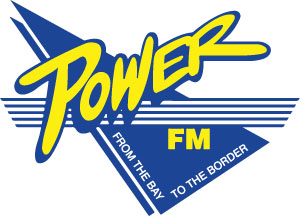A group of swimmers in distress have been pulled from the surf at McKenzies Beach near Batemans Bay.
NSW Ambulance paramedics were called to the Malua Bay beach around 6.30pm on Saturday (January 7) where five people were assessed, including 3 adults and 2 children.

A NSW Ambulance spokesperson confirmed that two patients were taken to Batemans Bay District Hospital for observation.
It comes just days a marine safety warning issued by NSW Police and Surf Life Saving NSW.
A staggering 1,200 rescues have been completed by surf lifesavers across the state over the Christmas/New Year period, illustrating the importance of the volunteer-based movement as it continues to provide an essential service on our beaches.
For the period from 23 December to 2 January, 1,194 rescues were completed by volunteer lifesavers and lifeguards along the NSW coastline, with more than 800 of those coming on Boxing Day, New Year’s Day and the public holiday Monday that followed.
It’s the highest number recorded in the last five years by the Surf Life Saving NSW State Operations Centre (SOC) for that 11-day period.
In that time, surf lifesavers and lifeguards also completed 56,470 preventative actions, administered first aid to 1,428 people, and called 75 ambulances to attend incidents.
Emergency incidents tallied 85 – a high in the past five years too.
Meanwhile, there have been six coastal drownings for the summer so far (December 1 to present), down four on the same time and for the same period last year. All recorded drownings over summer came at unpatrolled locations.
“I would like to take an opportunity to commend our many thousands of members who patrolled the beaches over the Christmas and New Year period,” SLSNSW President, George Shales OAM said.
“It is traditionally one of our busiest times of the year and it held true once again this time around, and to see a record number of rescues is testament to the fantastic work our volunteers do to keep beachgoers safe.
“Many of our lifesavers who were performing rescues over the break had also responded to the NSW flood emergency earlier in the year and many are still deployed in far western NSW, which just shows the impact the movement has on so many communities.
“The sheer volume of incidents, rescues and preventative actions has shone a light on lifeguards and volunteer lifesavers up and down the coastline and highlighted just how lucky we are to have dedicated, well-resourced individuals looking out for our safety on the beach.
“It’s important, to remember that we also must look out for our own safety and make smart decisions when we head to the coastline. That begins with choosing to visit a patrolled beach and swimming between the red and yellow flags.”
Last year across the state, the period between December 2021 and February 2022 claimed the record for the most coastal and ocean drowning deaths over a summer, with 25 fatalities recorded in NSW, despite the higher than usual rainfall from La Niña and reduced beach attendances.
In NSW, drowning deaths are 2.7 times more likely to occur on a public holiday and 1.6 times more likely during school holidays.
“The most important thing to do when considering entering the water, is to do so at a patrolled beach between the red and yellow flags,” George said.
BEACH SAFETY TIPS
-Always swim between the red and yellow patrol flags, for your nearest patrolled beach check the BeachSafe app or website
-Read the safety signs for information about the beach and ask a lifesaver or lifeguard for safety information
-Always swim with someone else so you can look out for each other, and always supervise children around the water
-Never swim under the influence of alcohol or drugs
-If you need help in the water, stay calm and attract attention by raising one arm
-In an emergency, dial Triple Zero
-For information about patrol times, weather, and beach locations visit the Beachsafe Website or Download the App.
Images: NSW Ambulance, Google Maps









